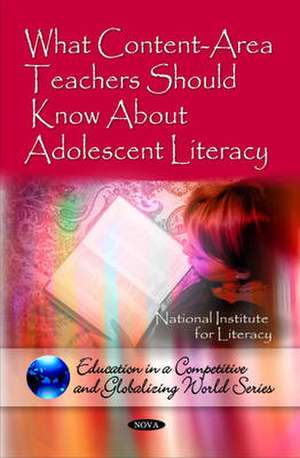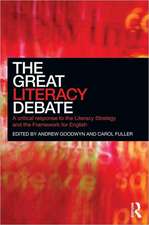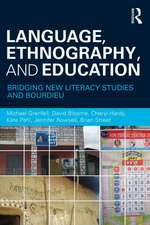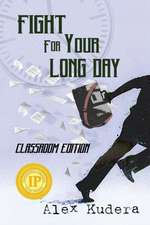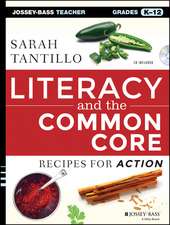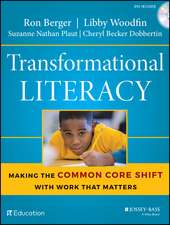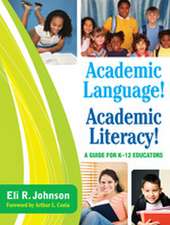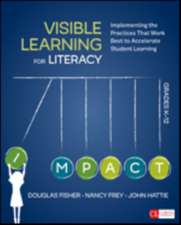What Content-Area Teachers Should Know About Adolescent Literacy
Autor National Institute for Literacyen Limba Engleză Paperback – 20 mai 2010
Preț: 350.79 lei
Preț vechi: 474.54 lei
-26% Nou
Puncte Express: 526
Preț estimativ în valută:
67.12€ • 73.14$ • 56.56£
67.12€ • 73.14$ • 56.56£
Carte disponibilă
Livrare economică 03-17 aprilie
Preluare comenzi: 021 569.72.76
Specificații
ISBN-13: 9781607411376
ISBN-10: 1607411377
Pagini: 96
Ilustrații: charts
Dimensiuni: 152 x 225 x 8 mm
Greutate: 0.17 kg
Ediția:New.
Editura: Nova Science Publishers Inc
ISBN-10: 1607411377
Pagini: 96
Ilustrații: charts
Dimensiuni: 152 x 225 x 8 mm
Greutate: 0.17 kg
Ediția:New.
Editura: Nova Science Publishers Inc
Cuprins
Preface; Introduction; Decoding; What Do Good Readers Do?; What Challenges Do Adolescent Readers Face Regarding Decoding?; How Can Instruction Help Adolescent Students with Decoding?; What Do We Still Need to Know?; Morphology; What Do Good Readers Do?; What Challenges Do Adolescent Readers Face with Morphology?; How Can Instruction Help Adolescent Students with Morphology?; What Do We Still Need To Know?; Fluency; What Do Good Readers Do?; What Challenges Do Adolescent Readers Face with Fluency?; How Can Instruction Help Adolescent Students Read Fluently?; What Do We Still Need to Know?; Vocabulary; What Skills Do Good Readers Have?; What Challenges Do Adolescent Readers Face with Vocabulary?; How Can Instruction Help Adolescent Students with Vocabulary?; What Do We Still Need to Know?; Text Comprehension; What Do Good Readers Do?; What Challenges Do Adolescent Readers Face with Text Comprehension?; How Can Instruction Help Adolescent Students with Text; Comprehension?; What Do We Still Need to Know?; Supporting Literacy Development Through Assessment, Writing, and Motivational Strategies; Reading Assessment; Summative Assessments; Formative Assessments; Diagnostic Assessments; What Do We Still Need to Know?; Writing; What Do Good Writers Do?; What Challenges Do Adolescent Readers Face with Writing?; How Can Instruction Help Adolescent Students with Writing?; What Do We Still Need to Know?; Motivation; What Do Motivated Readers Do?; What Challenges Do Adolescent Readers Face with Motivation?; How Can Instruction Help Adolescent Students with Motivation?; What Do We Still Need to Know?; The Needs of Diverse Learners; Conclusion; References; Additional References; Index.
